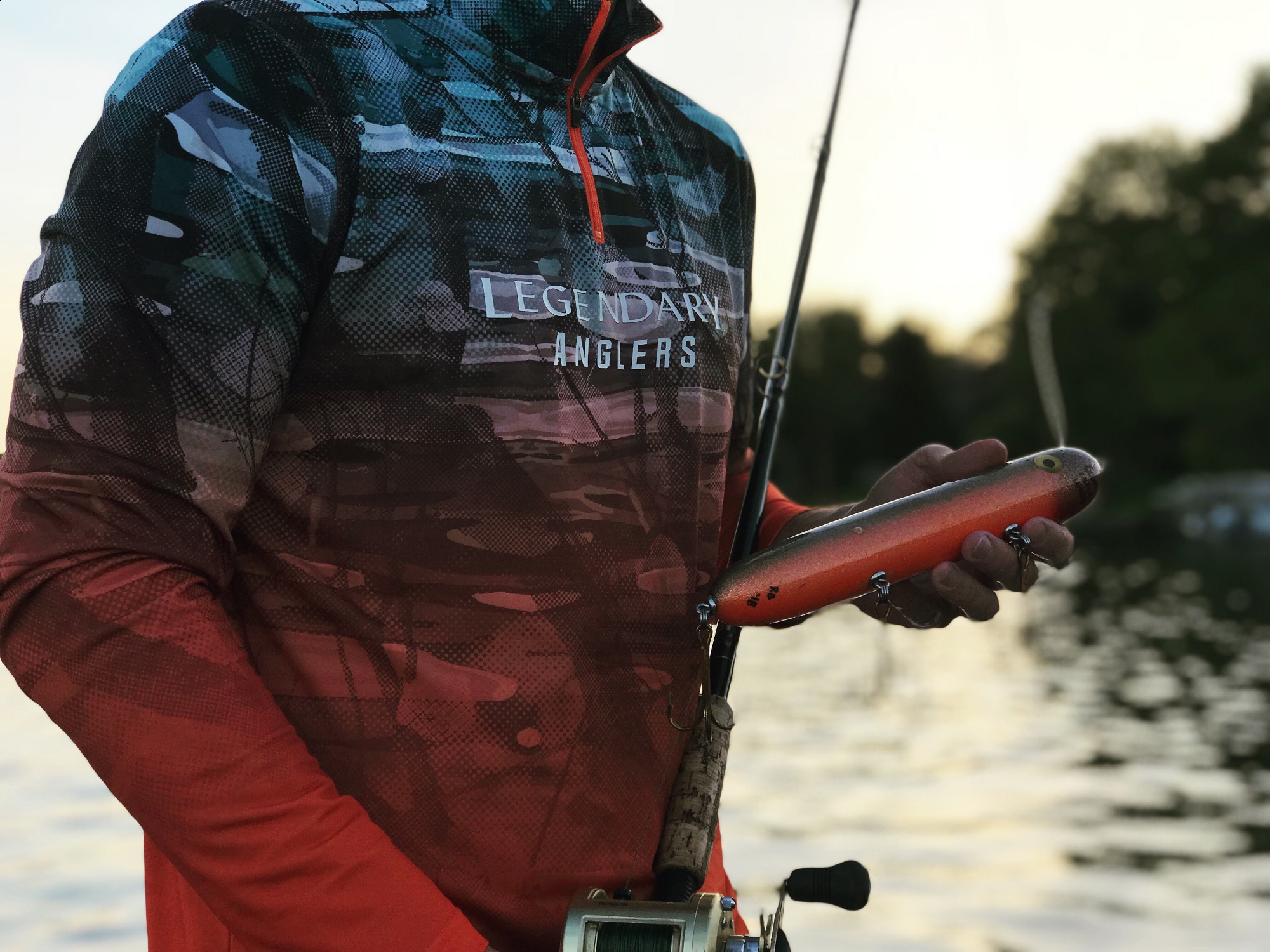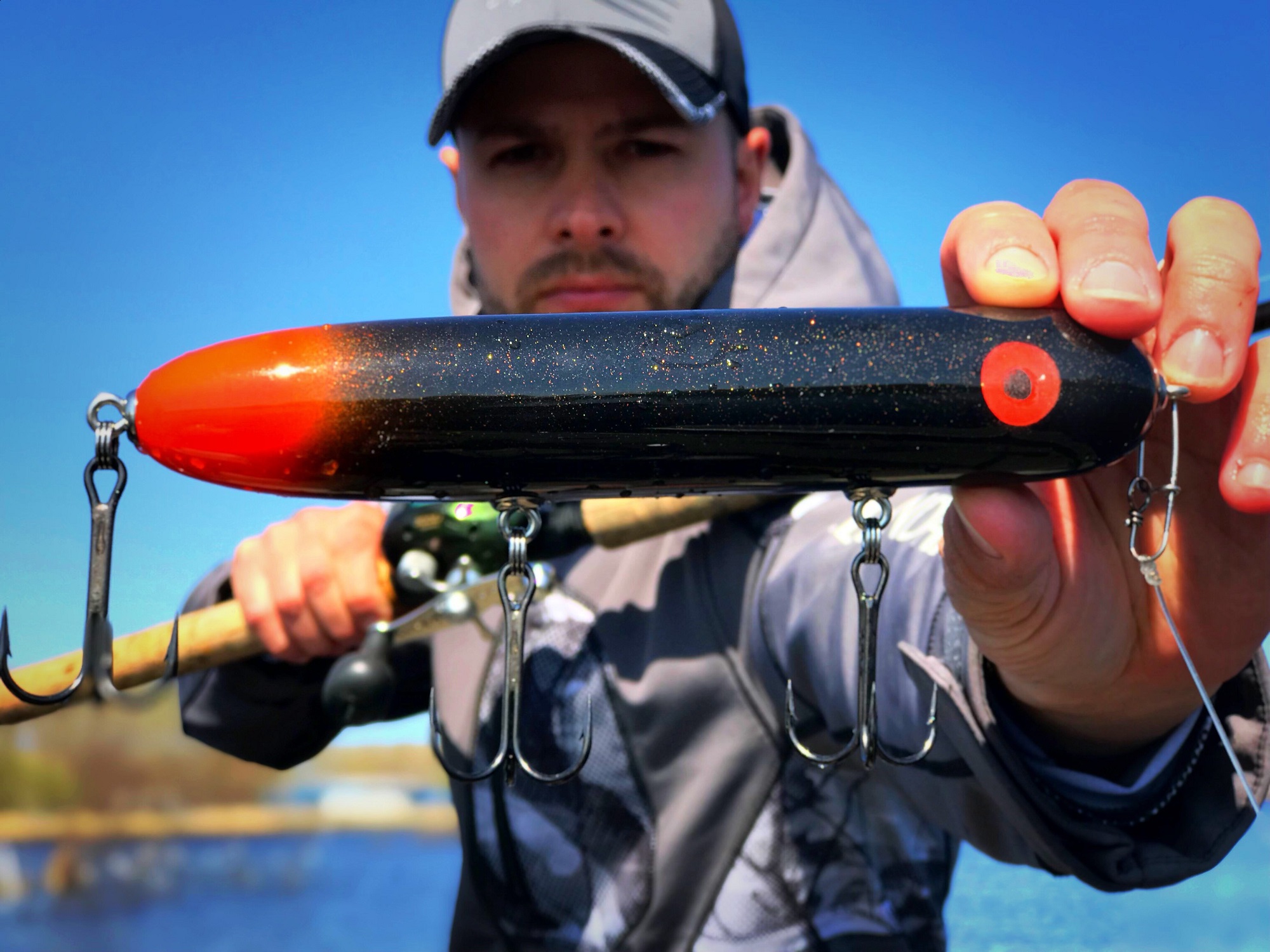Lures were designed to catch fish – plain and simple. Decades ago, various topwater baits and metal lipped crankbaits were lathed, carved and painted with simple patterns. Perhaps the most common vintage paint pattern of all was the red head and white body. Modern hard baits, whether it’s a topwater application, jerkbait or crankbait, and even soft plastic swim baits are now finely airbrushed and stenciled with remarkable detail. The question is – does the detail really help catch more fish?
I have heard a lot of opinions surrounding this topic and one misconception is that fish see in simple shades of grey, or, black and white. Many fish, especially freshwater game fish, see in color. Within the retina of a fish’s eye, rods and cones help distinguish color. The rods are useful at night to discern shades of light, while the cones help fish identify color in daylight.
Today’s modern era of paint jobs on lures is fascinating. The attention to detail can be profound, with layers of paint and stencil work creating 3D scale patterns and imitations of forage fish becoming so lifelike to the human eye that it leaves a person wondering if the bait would better serve its purpose as a decorative art piece than be subjected to hook rash and teeth marks.
Imagine for a moment you’re snorkeling in a lake with goggles on. Beneath the surface of the water, algae and sediment, along with countless other suspended partials of substance make visibility somewhat cloudy, almost reminiscent of seeing through the fog. Now imagine a lure erratically moving past you at a fast pace – do you suppose you’d be able to make out the details on the lure?
Fish don’t wear goggles, and water clarity can vary dramatically. Some lakes are stained, some lakes are clear, but all lakes have particles of sediment suspending throughout, and depending on the depth, light can only reach so far before dwindling to darkness. Each of these considerations contributes to the visual perception of lures underwater – a moving lure will appear as shades of color, but the details will fade.
Every time I select a lure I hold it out before me and squint my eyes to blur my vision. While there’s no comparison between my blurred vision and that of a fish seeing through the water, by doing so I am eliminating the details painted on the lure and focusing on the shade(s) of color that predominantly appears. I then consider how the shade(s) of color will prevail in certain conditions – will I be using the lure in the early mornings and late evenings when lighting is dim? Or will I be fishing clear water? Or stained?

As a musky fanatic, admittedly I own hundreds of hand-painted baits, of which many are so detailed I cringe when I see the onset of hook rash scratch the epoxy surface. Musky lures are by far the most commonly hand-painted lures of fresh water, many of which are handcrafted on a workbench in someone’s home and sold in small batch quantities to local musky shops, sold at shows, or made-to-order. Do I believe the details painted on baits will help me catch more fish? No, but I buy them anyway because I can’t help myself – they look cool.
Therein lies the biggest question of all – do detailed paint jobs on lures catch more fish, or do they catch more fishermen?
There are all sorts of theories on why one color pattern may be working better than the next, but I like to dumb it down a little and consider what colors stand out the most to enhance the visual profile of the lure. A simple example to consider is selecting a darker bait under grey overcast skies, versus louder, brighter colors under sunny conditions. If you hold up a chartreuse lure to an overcast sky, the silhouette of the lure will be diminished, but if you hold a black lure up to overcast skies you will see a distinct profile of the bait.
I own more solid black lures than any other pattern in my collection of baits. The second most predominant color I own is white, or shades of white. The reason is simple – I want to create the biggest target possible for the fish to zero in on.
Before you get too carried away with overthinking color options for your next lure purchase, realize that game fish hunt more so by feel than they do by visual cues. The “footprints” of a lure left behind by water displacement is their way of tracking down a moving target, much like a human follows tracks in the snow. The lateral line is a system of sensory nerves that alert fish to the invisible sensation of movement, or “noise”, underwater. In other words, the action of your lure makes more of a difference whether the fish decides to strike than the actual color. Even a blind fish can eat, the movement it feels will tell it how fast its moving and if it’s worth using its energy to chase down.

Now that we know the color isn’t the most advantageous part about whether your bait will catch fish or not, it certainly shouldn’t be dismissed. If lure color wasn’t important, I wouldn’t have written this article. To maximize your opportunities at hooking up to more fish, all aspects should be considered and used.
Eyes on the lures are a big question I’ve seen asked time and time again on internet forums and even talked about with folks at the docks. Do you really need eyes on lures, or is that just another detail to enhance the allure of the bait to attract more fishermen into pulling out their wallets?
For me, eyes are a big deal and I want them on my baits. Not only do I want them on my baits, but I want them large and occasionally accentuated with a highlight of paint contrasting to the rest of the lure body surrounding the eye with a touch of airbrush magic. I believe contrasting accents on a predominant shade of body color serves as a dinner bell or as a visual cue to trigger contact with the fish. Perhaps it’s this very logic that has extended the popularity of the vintage paint job – a red head and white body.
Now, if you ask me for an opinion on “matching the hatch” with lure patterns, I’d better save that for another article before I get too lost in the weeds with theories and opinions.






